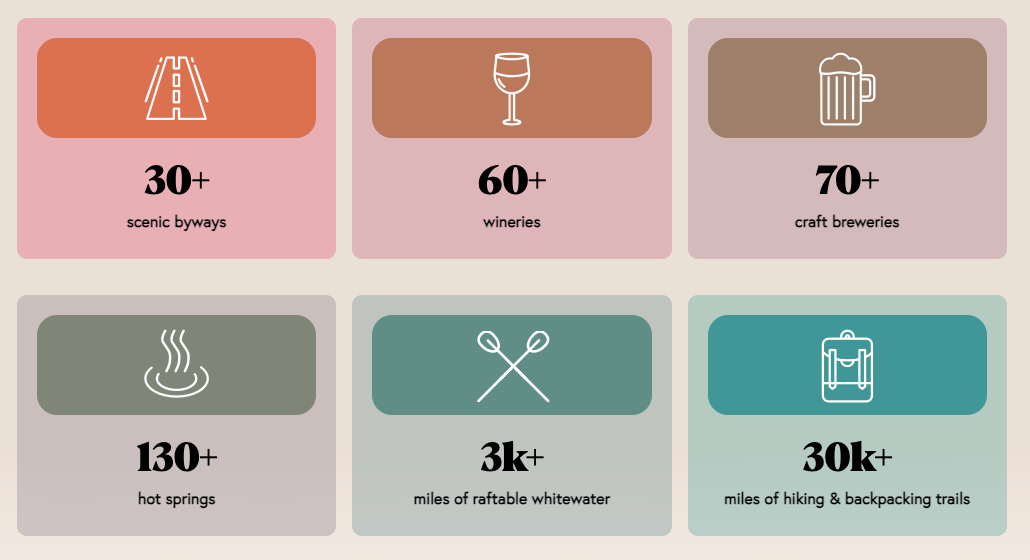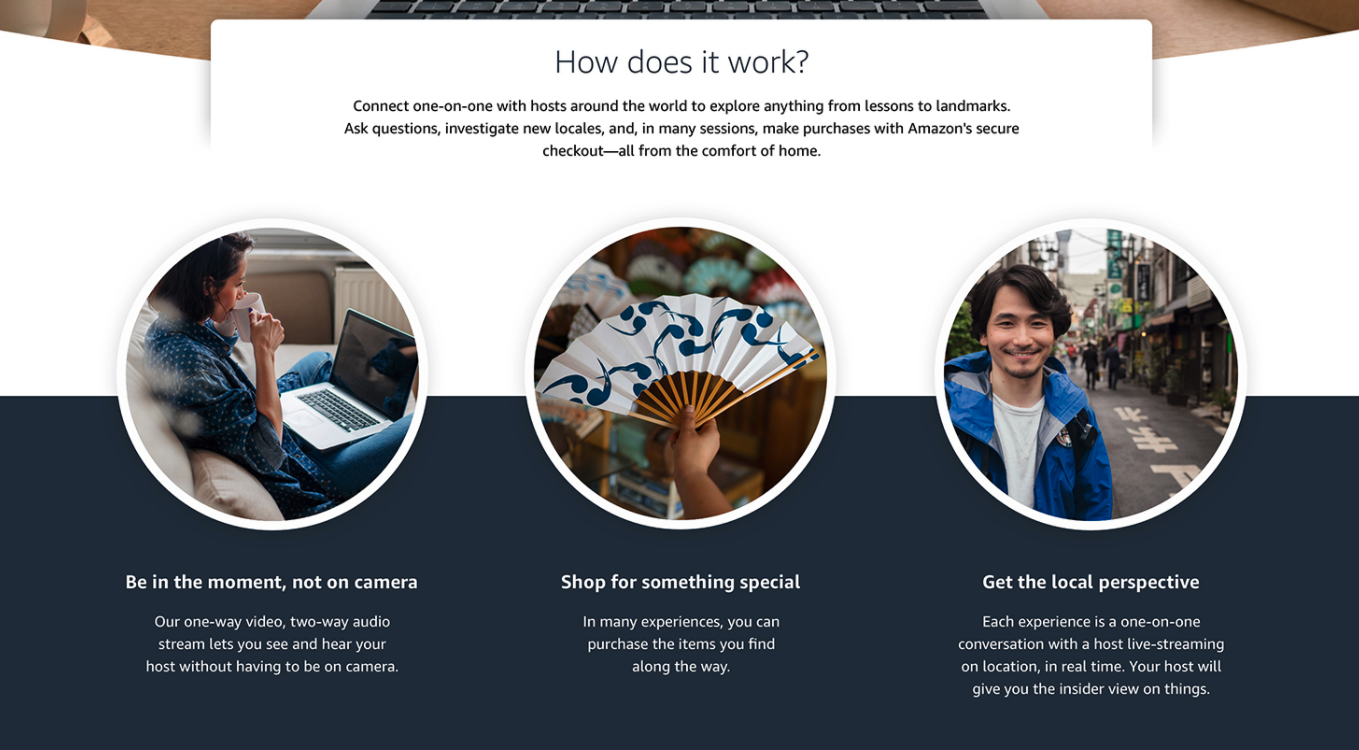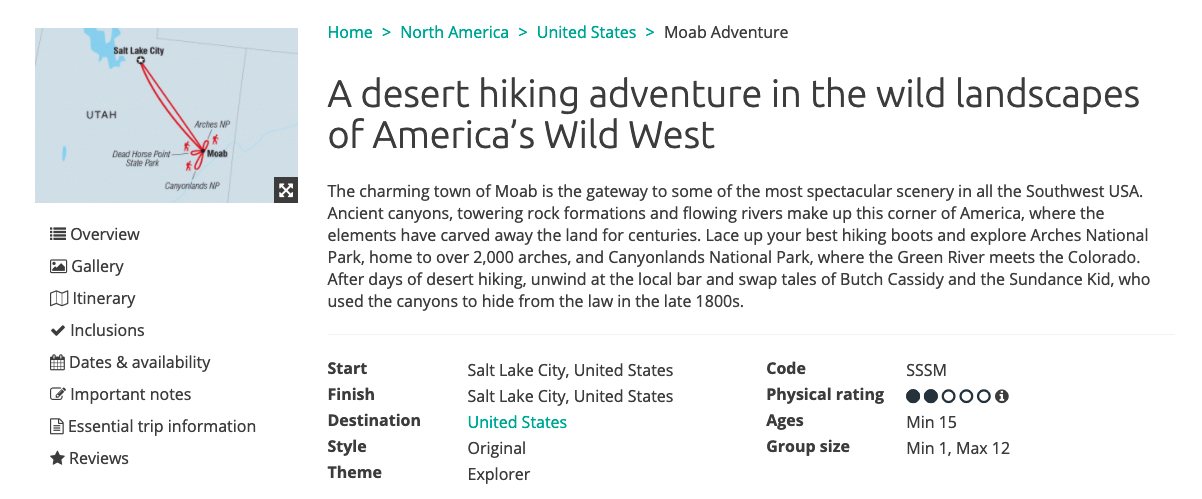
If you have yet to master the art of travel copywriting, you’re not alone.
Crafting the perfect welcome page and tour descriptions take a lot of practice, especially if you’re not a professional copywriter. Travelers today are often sifting through dozens of tour and activity descriptions when planning a trip — and it’s up to you to make yours stand out.
After all, photos or testimonials alone won’t persuade readers to hit that “book now” button. Your tour descriptions also need to be engaging and effective.
The most successful tour operators leverage proven copywriting frameworks and storytelling techniques to get customers excited about what they’re offering. In other words, your tour descriptions should appeal to your guest’s emotions and give them a taste of what it’s like to experience it.
Ready to learn how to create well-written, engaging copy that inspires your readers to book? Let’s dig in.
What is travel copywriting?
Travel copywriting is the messaging you use to connect with travelers and convert them to customers. It’s the words (or copy) used to sell your tours and activities across your website, social profiles, email list, and other online marketing outlets.
When you think about copywriting, remember the 4 C’s.
- Clear:Keep your writing clear and easy to understand.
- Concise:Get the information across in a concise, straightforward way.
- Compelling:Find a compelling angle that’ll appeal to your target customer.
- Credible:Build credibility by including your expertise and customer testimonials.
Your tour descriptions are a prime example. When you describe your tours, your main goal is to inform and ultimately persuade your guests to book.
Knowing your audience is key because it allows you to appeal to their emotions and anticipate their questions. An adventurous traveler looking for a multi-day hiking tour, for example, will get excited when they read about the scenic landscape and wildlife they’ll encounter along the way.
Here are four proven copywriting frameworks you can use to convert customers:
AIDA: The goal behind the AIDA framework is to hook the reader in and keep them interested in reading until they reach your call-to-action.
- Attention:Grab the reader’s attention with a catchy title.
- Interest:Lure them in with unique or fresh information.
- Desire:Appeal to their heart or emotions with what you’re offering.
- Action:Ask them to take the next step.
PAS: The PAS formula clearly presents the problem your potential customer is facing and offers a solution.
- Problem:Acknowledge the problem your customer is facing.
- Agitation:Agitate your customer about their problem by pointing out how awful it can be.
- Solution:Offer a solution that will fully cure their problem.
Hero’s Journey: The Hero’s Journey copywriting formula uses storytelling to make your customer the hero of your brand story.
- Call to Adventure:The hero is called to an adventure.
- Meeting a Mentor:The hero meets a mentor who advises them on the problems to come.
- The Battle:The hero uses what he or she learned from the mentor and fights a problem.
- Victory:The hero comes out victoriously, and it’s a happy ending.
BAB: The BAB framework is similar to PAS in that it describes a problem and explains how to get to a world where that problem doesn’t exist.
- Before:Show your customer that you’re aware of their problem.
- After:Have them imagine a world without their problem in it.
- Bridge:Offer them your product or services as a way to get there.
Why is copywriting important?
Your copywriting can help you maximize your bookings and scale your sales to a new level. Especially in the travel industry, the way you portray your experiences online has a major impact on whether customers book with you.
What many tour operators may not realize is that good sales copy goes beyond well-written content. It’s also the strategy of getting your content in front of the right readers.
The most effective copywriting leverages search engine optimization (SEO) so that your website appears at the top of Google search results in your market. Ranking on Google will consistently attract the right visitors to your website, and therefore, boost your bookings.
7 tips for effective copywriting
If there are gaps to fill in your tours, there may be some room for improvement in your copywriting. Here are seven copywriting tips that will help you drive more bookings in no time.
Identify your target audience
It’s tough to craft the perfect tour description if you don’t know who you’re selling to. For example, a day-long jungle hike won’t appeal to honeymooners looking for a luxurious spa retreat.
Identifying your target customer is key to creating good copy. When you understand your audience and the travel experiences they’re looking for, you’ll be able to create content tailored to that specific group of people.
Anticipate your customer’s questions
When you know your target audience, you can also start to anticipate their questions. Great copy answers those questions before they’re asked.
Your descriptions especially should address any concerns your guests may have before booking. Guests going on a cycling tour, for example, may wonder whether or not your company provides helmets. Effective copywriting would clearly answer that.
Use storytelling techniques to capture your reader’s attention
Travel copywriting is unique in that you can use storytelling techniques to transport readers to a specific place or experience.
You want to make your customers feel like they’re immersed in your tour and activity when they read your tour description. Focus on the sensory aspects: Is it the aroma of freshly sliced garlic sizzling in a pan of olive oil in your cooking class? Is it the way the sky turns bright orange during your sunset sail?
Describe the moments that would most appeal to your ideal customer’s emotions. Compelling tour descriptions can trigger an emotional response from the reader that persuades them to book.
Highlight unique aspects of your tours
What makes your tours and experiences different from others? Highlight these aspects on your homepage, tour descriptions, and marketing campaigns.
Guests are always looking for unique and memorable travel experiences. Show them that your tours will give them just that.
Keep it concise and to the point
Great copywriting hooks the reader in and triggers emotion but is also concise and to the point.
When it comes to travel, guests are likely skimming through dozens of tour descriptions, so you want to make yours stand out with as few words as possible. A large body of text can be overwhelming and drive readers away.
Your guests want to know why they should book your tour and what to expect from it. Focus on those two points when you’re crafting your website copy.
Use SEO to expand your reach
Search engine optimization (SEO) is the act of creating content to rank for specific keywords on Google. You can improve your on-page SEO by researching the keywords your guests are likely searching for, then tailor your content to those keywords.
If you sell canoe tours in Washington, for example, you could target the phrase “best canoe tours in Washington.” You can include this phrase on your homepage, tour descriptions, and in a blog post dedicated to the topic.
Be consistent with your tone and voice
It might take some time, but every tour business eventually finds its copywriting voice. A consistent tone of voice across all your platforms — from your website to your social profiles — can help you build your brand identity.
If your tone on Instagram is light and fun, but the copy on your website is serious and dry, there could be a disconnect. Your customers who find you through social media will be expecting the same tone and voice on your website and vice versa.
Write a catchy call-to-action
Keep your customer journey in mind when crafting your tour descriptions and marketing campaigns.
What’s the next step your customer should take after reading your copy? Include a catchy call-to-action that persuades them to take that next step.
3 examples of top-notch copywriting from travel brands
Let’s take a look at these copywriting tips in action. Here are three examples of top-notch copywriting from a tourism board, a luxury tour operator, and eCommerce site Amazon.
Visit Idaho’s Homepage
The Visit Idaho website captures travelers’ attention in just 11 words. Its landing page sells Idaho as “The Gem of the Northwest” and prompts readers to “Discover the Unexpected.”
Crafting a catchy introduction like this can easily draw curious travelers into your website. Here, the call-to-action comes in a fun button with the phrase “Get to Know Idaho.” Again, catchy and concise.

You can also easily tell that the tourism board is focused on marketing its outdoor adventures. The homepage zeros in on stats that appeal to their target audience, such as Idaho’s 130+ hot springs and 30,000 miles of hiking and backpacking trails.
Overall, the tourism board does a fantastic job pairing short and catchy descriptions with beautiful photos to lure their target audience in.

Amazon Explore’s Virtual Experiences
Amazon Explore recently began offering virtual travel experiences that range from a Mexican cooking class to a rickshaw tour through Tokyo. Online travel is a fairly new concept, and naturally, guests will have a lot of questions before booking.
The company does a wonderful job of anticipating these questions.
After reading the four small paragraphs on the Amazon Explore landing page, customers learn that the experiences include one-way video and that the host will be a local who will live-stream the experience in real-time.
Tour operators should similarly think about the questions guests would have before joining their activity and answer them in their tour descriptions.
It’s also key to highlight what sets you apart from other similar experiences in your area. In Amazon’s case, the company promotes the fact that guests can shop for items related to the virtual experience while on the tour — something that only an e-commerce site as big as Amazon can offer.

Intrepid Travel’s Tour Descriptions
Intrepid Travel quickly hooks travelers in with descriptive yet informational language in its tour descriptions.
Take a look at the company’s Moab Adventure page. A quick yet engaging introduction pulls hikers in with language like “ancient canyons” and “towering rock formations” — two things that would excite outdoor adventure travelers.

The company clearly knows its target audience and is appealing directly to them in a section called “Why you’ll love this trip.” Here, Intrepid expertly describes the memorable experiences that travelers can expect on this trip and does a great job getting readers excited about them.
Now that you’ve seen a few examples of top-notch copywriting, you can start improving your own.
You don’t need to be a copywriting expert to craft engaging and effective content. You know firsthand how much your customers enjoy your tours and the memories you are helping them create. Focus on storytelling techniques to convey this message across in your writing.
We know that these tips will help you write killer copy that sells.





